 Stropharia - click to expand
Stropharia - click to expand
Everything else, but you may need to check the other two genera to make
sure.
Species
mentioned: Stropharia ambigua, coronilla, hornemannii, albivelata, inuncta, rugosoannulata, kauffmanii, aeruginosa, caerulea, pseudocyanea, cyanea,
albonitens, melanosperma.
Stropharia ambigua OR -
fairly bright yellow, covered in cottony fluffiness when fresh,
but without a defined ring. The stem can be quite fluffy when
fresh. We have several sequences each of this native
species from BC, WA and OR, and they all match almost perfectly.
Stropharia coronilla EU -
this squat,
stocky yellow grass species
is
not fluffy
and was sequenced in Europe and in Whistler, and they match well, so that seems
to confirm our reports of it.
Stropharia hornemannii EU
- usually plain brown (but may be yellow-brown and resemble S. ambigua),
it is a little stockier than S. ambigua with a more developed
ring and perhaps less fluff on the cap margin. The stem is quite fluffy
when fresh. We have plenty of EU sequences as well as some AK, WA and OR
sequences to verify this species is here.
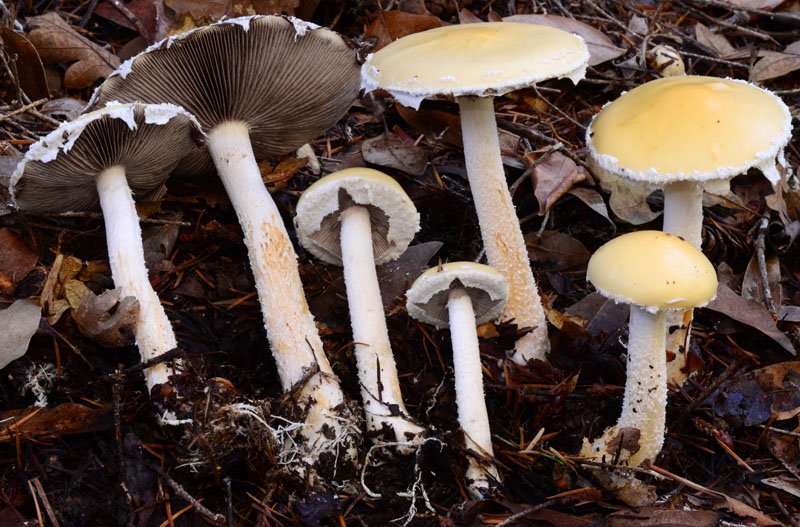
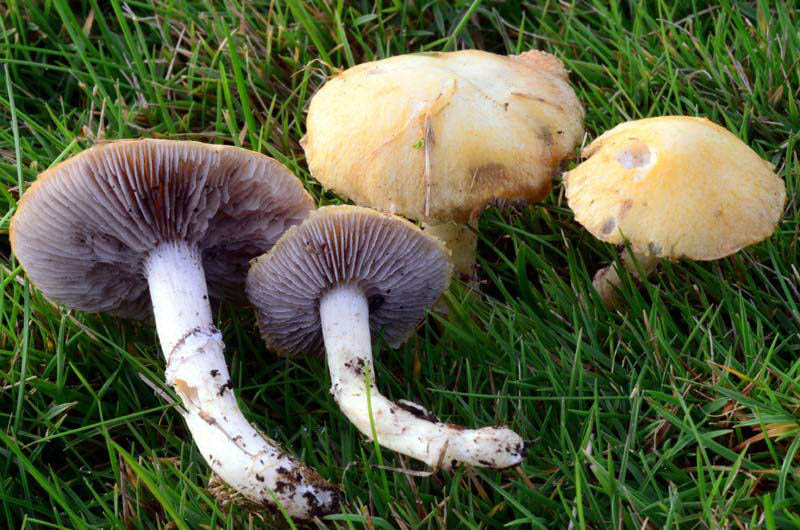
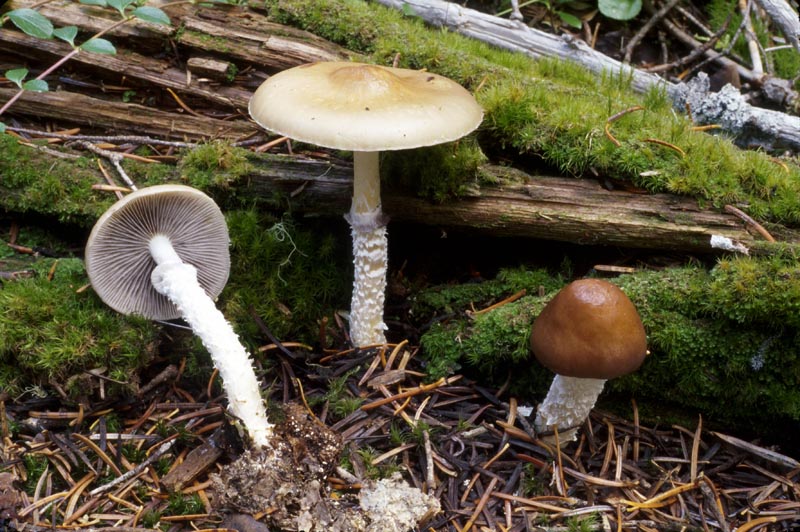
unsequenced Stropharia ambigua © Noah Siegel,
unsequenced Stropharia coronilla © Noah Siegel,
unsequenced Stropharia hornemannii © Steve Trudell
Stropharia albivelata WA
- this pale to dark vinaceous brown capped species has a warmer
cinnamon spore print, and might not be recognized as Stropharia by
spore colour alone. We have no local sequences, but as it is an endemic, it's
definitely here, although we need sequences to confirm how it fits in with the
others. It has the same small spores of the next species.
Stropharia inuncta EU -
this yellow-brown capped species usually has hints of grey and purple
(and an expected purple-brown spore print, but that's never been proven and our
photos show rather pale gills).
It has much smaller spores than Stropharia hornemannii. We have reliable
EU sequences, and one matching WA collection.
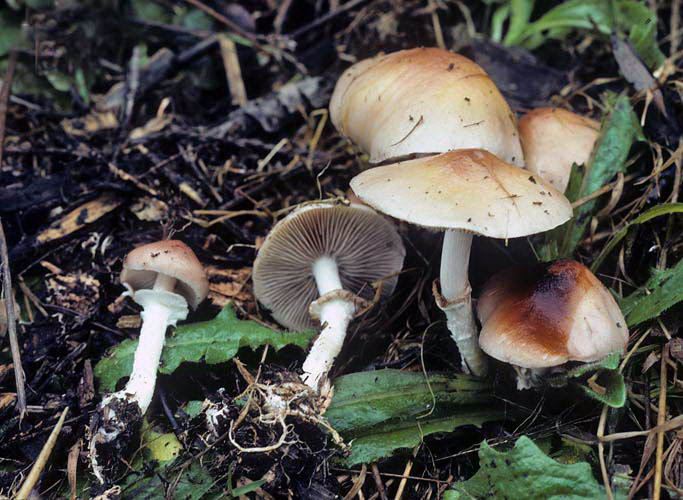
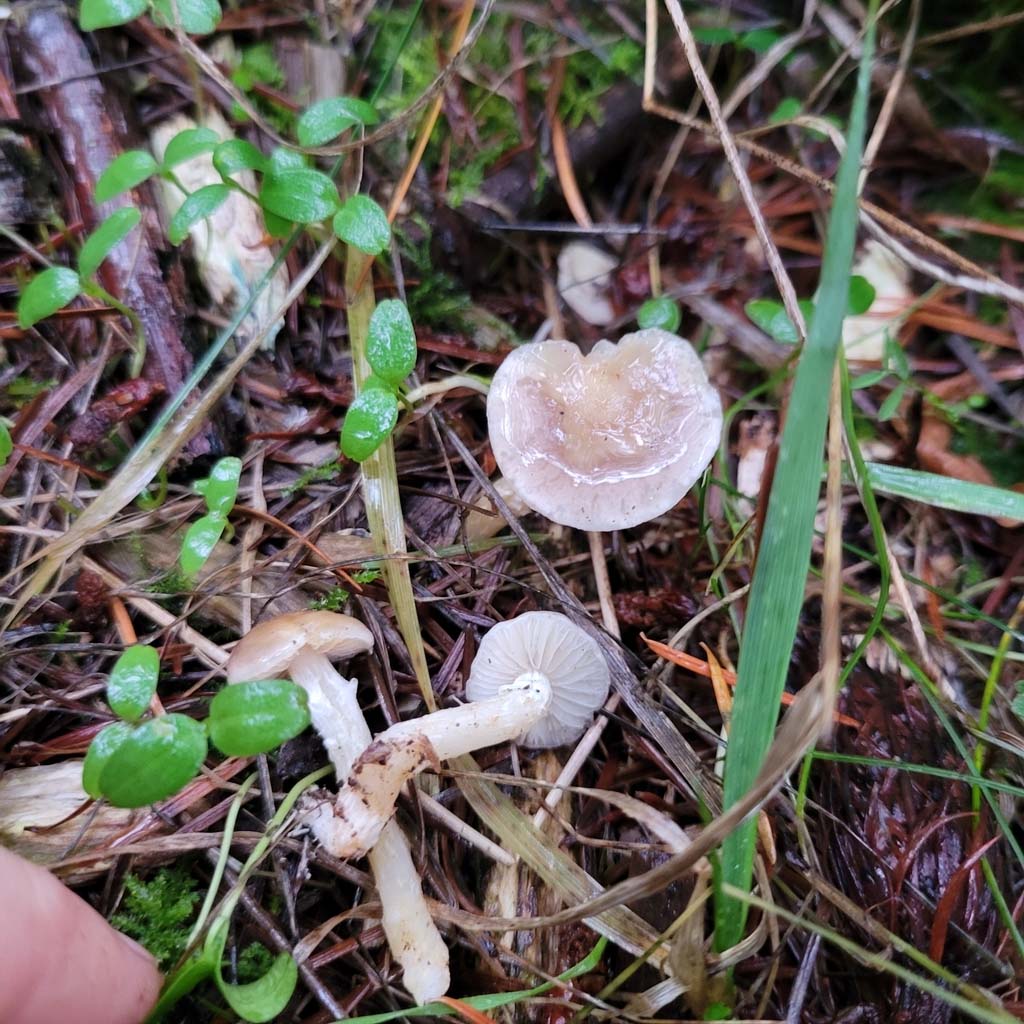
probable Stropharia albivelata © Kit Scates Barnhart,
S. inuncta © Kendra Dedinsky
Stropharia rugosoannulata MA
- red capped when young, fading to yellow or brown, in which case
the smooth stem is the best clue. Sequences world wide match very well,
so even though I have no PNW sequences yet, I'm confident ours is the same
species.
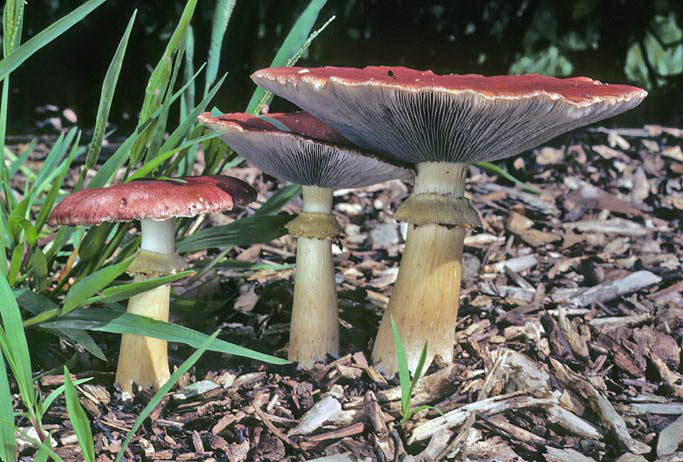
unsequenced Stropharia rugosoannulata (before fading to yellow-brown) © Kit Scates Barnhart
Stropharia scabella OR (=Pholiota
scabella OR, =Stropharia kauffmanii WA?) - Dry, scaly caps are
rare in Stropharia. Zeller described Pholiota scabella in 1933.
The type was sequenced and it turned out to be a Stropharia. Smith
described the very similar Stropharia kauffmanii in 1941. He probably
wouldn't have been looking for older synonyms in Pholiota. It looked like
there were two species for a while. S. scabella can have a dark brown
cap (see the AZ photos). I thought that the yellow brown capped
version might represent S. kauffmanii, but it too has a sequence matching
the type of S. scabella. So I think S. scabella can have a
variable cap colour and S. kauffmanii is a newer synonym. We should
sequence that type to prove it.
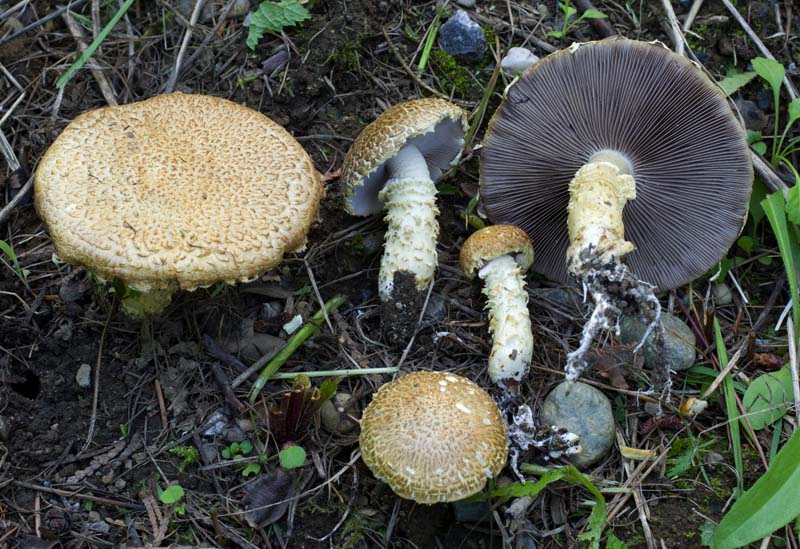
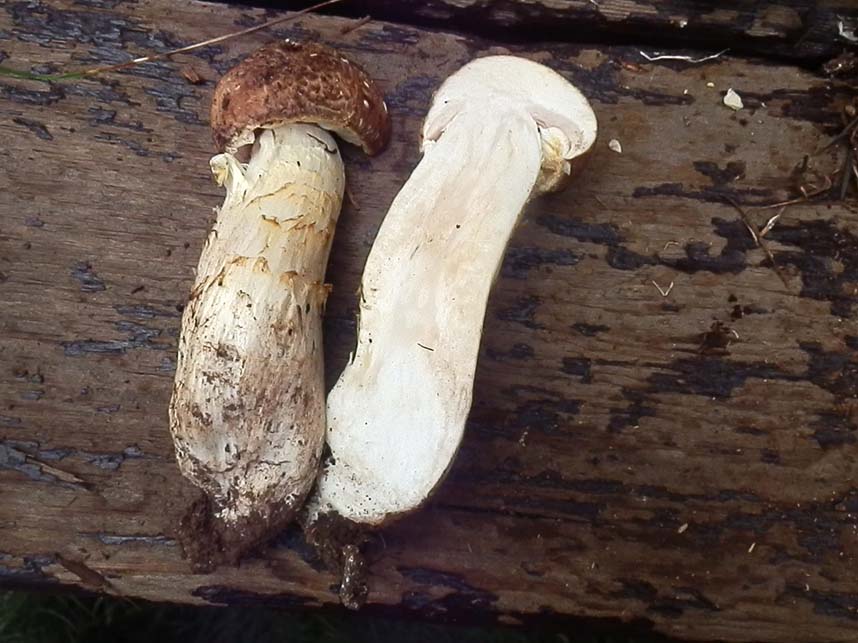
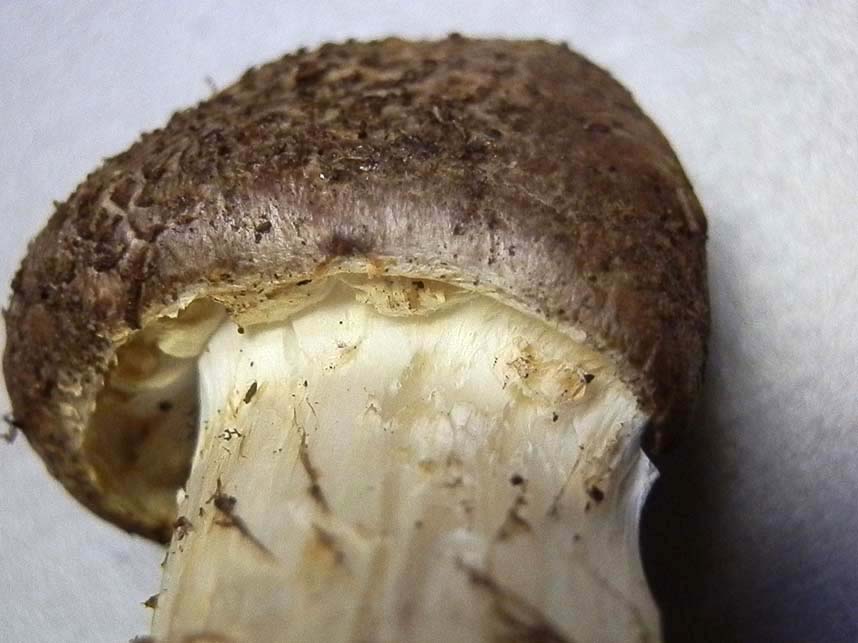
Stropharia scabella © Andrew Parker, Stropharia
scabella from AZ © Terri Clements and Donna Fulton (2 images)
Blue Stropharias - All blue Stropharias are hard to differentiate (being closely related, they have similar
spores) and are even difficult to recognize as a group after the blue has faded.
With the shaggy stems and pale yellow caps, you'll probably think old faded
specimens are
Stropharia albonitens, below.
Stropharia cyanea EU (=S. caerulea
EU) - blue
(fading slowly to pale yellow), small to medium, evanescent ring zone.
Only 2 matching sequences have been found so far. ITS sequences of both species in
the EU are basically the same, supporting the idea that they are synonyms.
However, S. cyanea is hundreds of years older (1784 vs. 1972) so I don't
know why many people use the name S. caerulea instead of S. cyanea.
Stropharia 'cyanea PNW01'
- All but 3 PNW sequences of a blue Stropharia have been this species, 4 bp
different than S. cyanea. I don't know yet how to tell them apart, or if
that's enough reason to justify treating this as a distinct species. This seems
to be more common in western WA than the true S. cyanea.
Stropharia pseudocyanea EU -
a more slender wetland species. It is blue
(fading more quickly to pale yellow), smallish, conical to umbonate,
with an evanescent ring zone. We have EU sequences that are probably this
(no type sequence to prove it though), and an EWA and an OR sequence that match
within a few bp.
Stropharia
aeruginosa EU - blue (but eventually fading to pale yellow),
large, somewhat more distinct ring than the others. We have EU sequences, and although this
species has been reported from the PNW, we haven't found matching DNA yet.
One stocky purported EWA collection turned out to be S. cyanea instead.
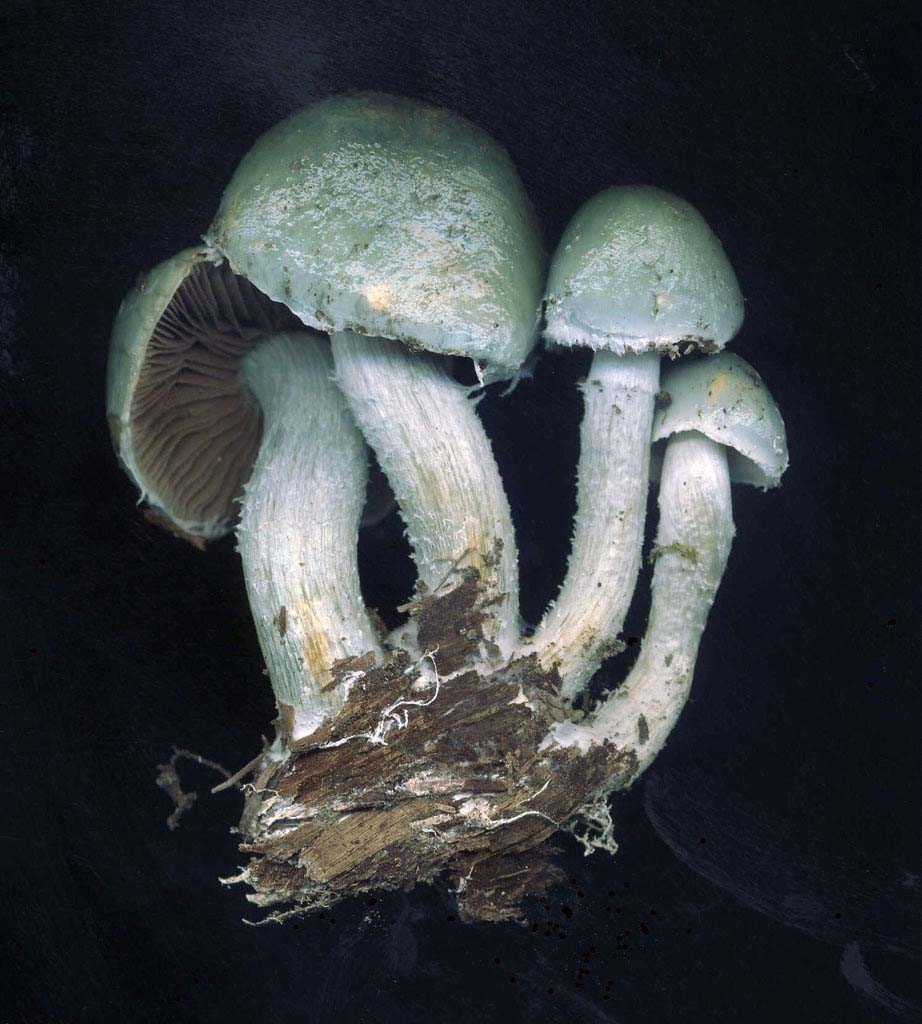
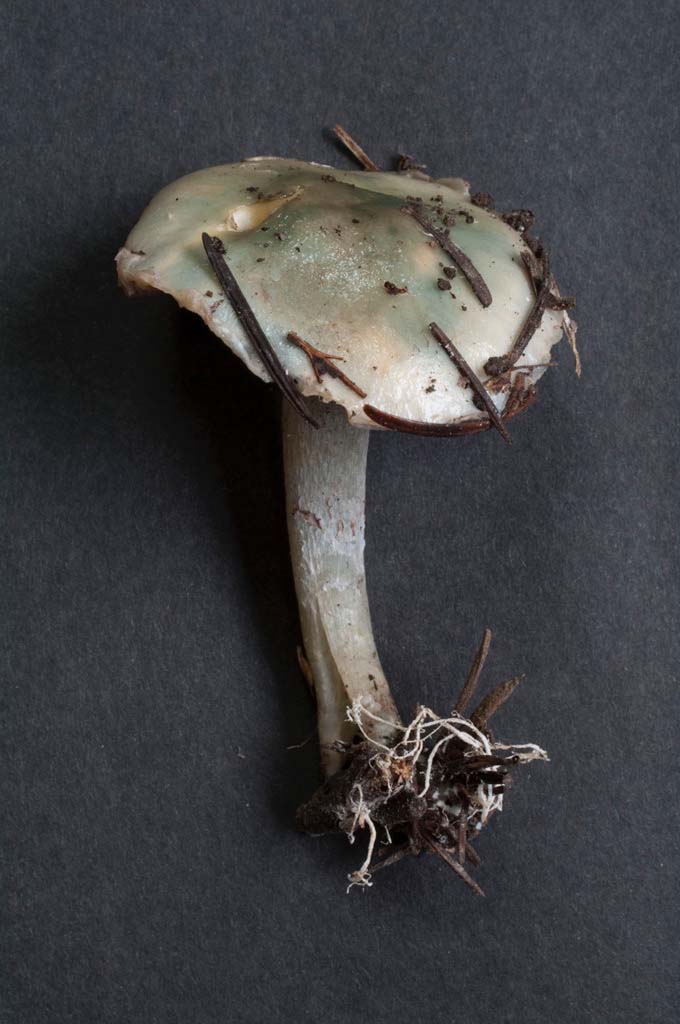
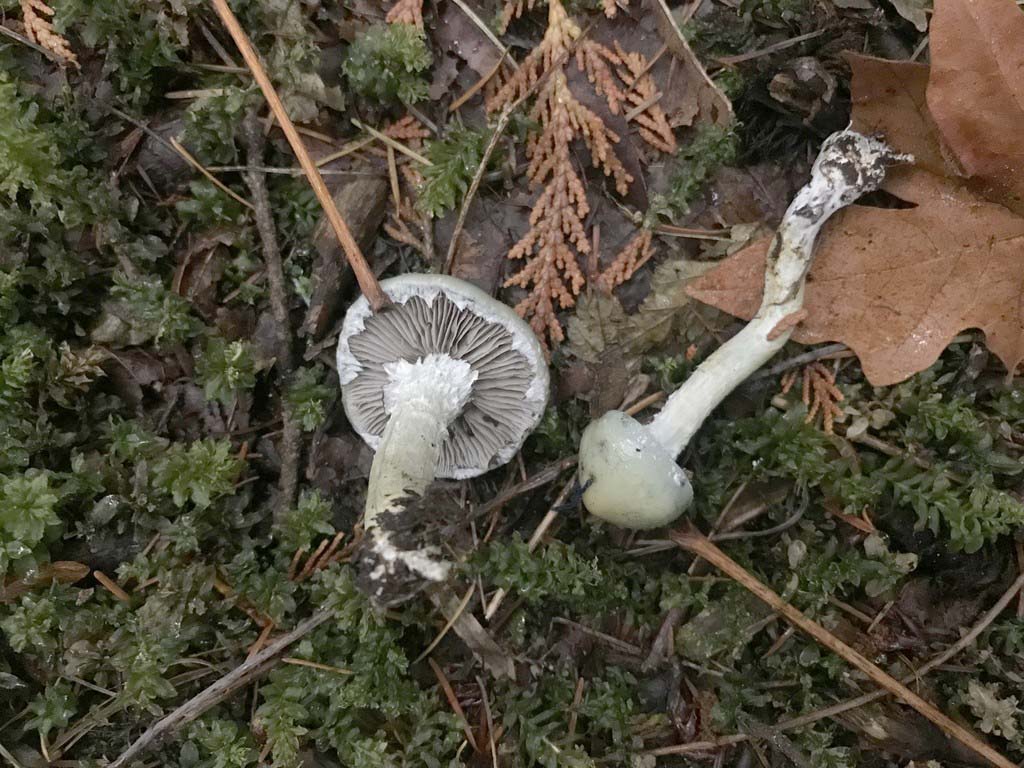
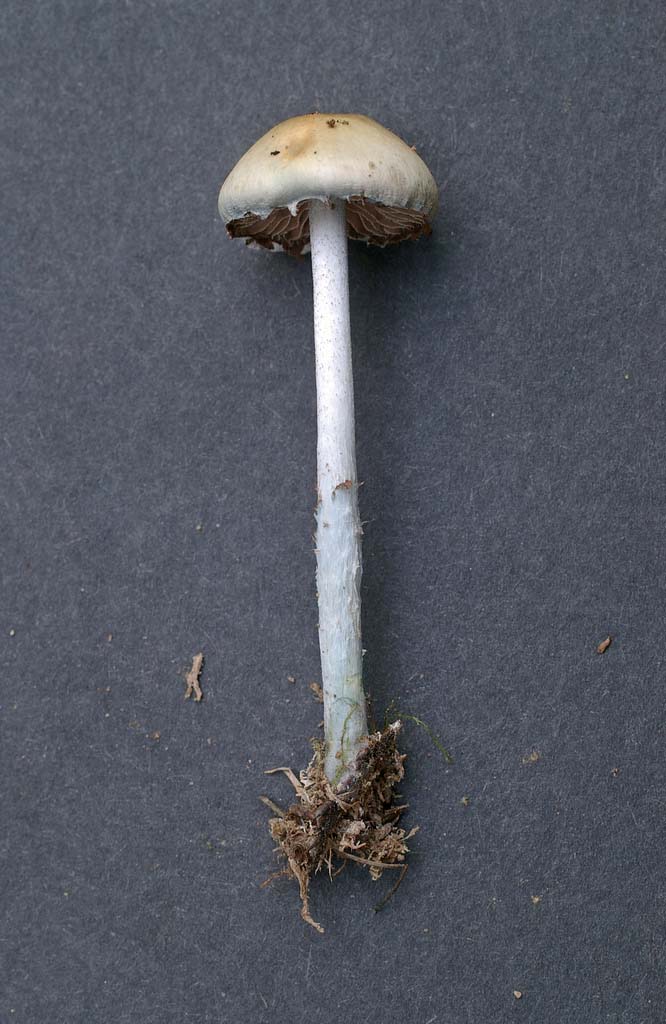
Stropharia cyanea (2 images), Stropharia 'cyanea PNW01' and S.
pseudocyanea © Andrew Parker
Stropharia albonitens EU
- this white to pale yellow Stropharia resembles the blue species after
they have faded, which it is somewhat related to. We have reliable EU sequences
but no PNW collections, which we need to make sure we really do have this
species here, and haven't just been finding faded blue Stropharia 'cyanea
PNW01'.
Stropharia melanosperma EU
- this white to pale yellow Stropharia has larger spores than the above
blue/pale yellow species. We need both EU and local sequences to compare to
confirm reports of this from the PNW.
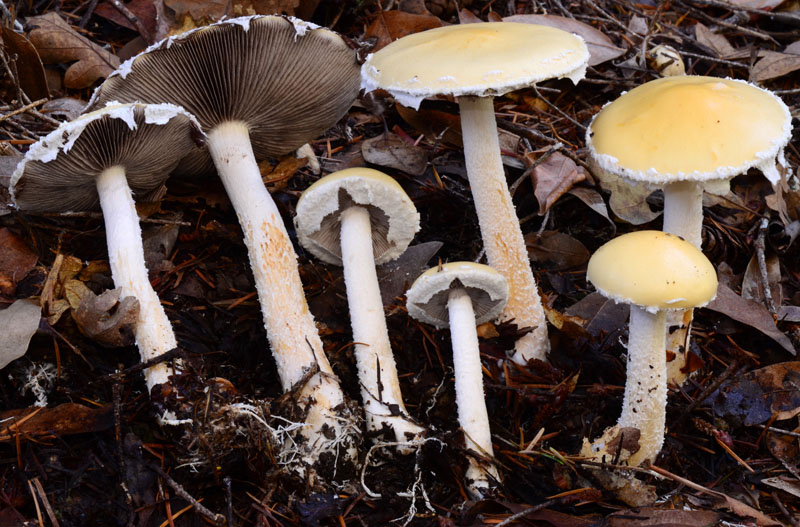
 Protostropharia - click to expand
Protostropharia - click to expand
 Leratiomyces - click to expand
Leratiomyces - click to expand
 Stropharia - click to expand
Stropharia - click to expand